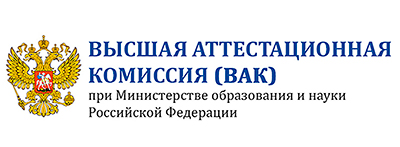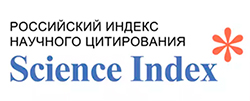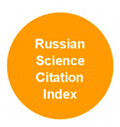(Не)время взрослеть: как меняется возраст наступления дебютных биографических событий у россиян
Аннотация
Бытует мнение, что нынешняя молодежь не только не торопится взрослеть, но и вообще отказывается обретать важные биографические события, которые как-то ограничивают их свободу и предполагают приверженность своему выбору (commitment). Чтобы узнать, так ли это, мы изучили возрасты наступления шести дебютных событий жизненного пути: получение профессионального образования, первое трудоустройство, первое отделение от родителей, первое партнерство (незарегистрированные отношения с совместным проживанием), первый брак, рождение первого ребенка.
Мы сопоставили поведение шести поколений россиян, родившихся между 1930 и 1986 годами. Выборка составила 5451 человека из панельной части обследования «Родители и дети, мужчины и женщины в семье и обществе» (РиДМиЖ) по состоянию на 2011 г. Мы не только изучили медианные возрасты наступления событий и наглядно представили их на сетке Лексиса, но также оценили шансы обретения стартовых событий при помощи регрессий Кокса (event history analysis).
Было выявлено, что серьезного откладывания или отказа от социоэкономических событий не происходит: трудоустройство и отделение от родителей минимально меняют свою позицию в расписаниях жизни молодых поколений. Возраст завершения обучения отодвинулся на более поздний срок, но это связано с существенным ростом числа получающих профессиональное образование разных уровней. Возраст вступления в первое партнерство в молодых поколениях снизился до исторического минимума, став самым ранним из трех демографических событий в жизни современной молодежи. Другие два демографических события – первые браки и деторождения – действительно, откладываются молодыми поколениями, особенно мужчинами. То есть молодежь не саботирует взросление, но дебютирует в разных сферах жизни сообразно своим жизненным расписаниям и в свое время.
Скачивания
Литература
Arkhangel’skiy V.N. (2006). Faktory rozhdayemosti [Fertility factors]. Moscow: TEIS.
Arutyunyan M.Yu. (1997). Gendernyye otnosheniya v sem’ye [Gender relations in the family]. In Materialy Pervoy Rossiyskoy letney shkoly po zhenskim i gendernym issledovaniyam «Valday-96» [Materials of the First Russian Summer School on Women's and Gender Studies "Valdai-96"] (pp. 136–141). MTsGI. (In Russ.).
Belyayeva L.A. (2004). Sotsial’nyy portret vozrastnykh kogort v postsovetskoy Rossii [Social portrait of age cohorts in post-Soviet Russia]. In Sotsiologicheskiye Issledovaniya [Sociological research], 10, 31–42.
Benjamin A., Crymble S.B. (2017). A Re-Imagination of the Transition to Adulthood. In A. Laros, T. Fuhr, E. W. Taylor (Eds.), Transformative Learning Meets Bildung (pp. 247–258). SensePublishers. URL: https://doi.org/10.1007/978-94-6300-797-9_20
Billari F.C., Hagestad G.O., Liefbroer A.C., Spéder Z. (2005). The Timing of Life: The Organization of the Life Course in Europe. In The timing of life: The organisation of the life course in Europe. European Social Survey. URL: http://www.europeansocialsurvey.org/docs/round3/questionnaire/ESS3_billari_proposal.pdf
Billari F.C., Liefbroer A.C. (2010). Towards a new pattern of transition to adulthood? Advances in Life Course Research, 15(2), 59–75.
Billari F.C., Hagestad G.O., Liefbroer A.C., Zsolt S. (2005). Question Module Design Team (ESS Round 3) Application Form: The Timing of Life: The Organization of the Life Course in Europe. URL: http://www.europeansocialsurvey.org/docs/round3/questionnaire/ESS3_billari_proposal.pdf
Billari Francesco C., Liefbroer A.C. (2007). Should I Stay or Should I Go? The Impact of Age Norms on Leaving Home. Demography, 1, 181. URL: https://doi.org/10.2307/4137227
Blum A., Sebille P., Zakharov S.V. (2009). A divergent transition to adulthood in France and Russia: A cohort approach. Revue d’Etudes Comparatives Est-Ouest, 40(3–4), 123–152.
Buchmann M. (1989). The script of life in modern society: Entry into adulthood in a changing world. Chicago: University of Chicago Press.
Corijn M., Klijzing E. (2001). Transitions to adulthood in Europe. Springer. URL: http://dx.doi.org/10.1007/978-94-015-9717-3
Darskiy L.E., Il’ina I.P. (1990). Normalizatsiya brachnosti v SSSR [Normalization of marriage in the USSR]. In Demograficheskiye protsessy v SSSR [Demographic processes in the USSR], (pp. 6-27). Moscow: Nauka [Science].
Denisenko M.B., Dalla Zuanna Zh.-P. (2001). Seksual’noye povedeniye rossiyskoy molodezhi [Sexual behavior of Russian youth]. In Sotsiologicheskiye Issledovaniya [Sociological Research], 2, 83-87.
Dolgova A.A., Mitrofanova E.S. (2015). Otdeleniye ot roditeley v Rossii: Mezhpokolencheskiy aspect [Separation from Parents in Russia: An Intergenerational Aspect]. In Ekonomicheskaya Sotsiologiya [Economic Sociology]. URL: https://publications.hse.ru/articles/168019618
Erikson E.H. (1995). Identity: Youth and Crisis. New York: W. W. Norton & Company.
Espy IV T.H., Mitrofanova E.S. (2017). Sequence Analysis of the Migration Biographies of Russians (SSRN Working Paper ID 3071733). Social Science Research Network.
Frejka T., Zakharov S. (2012). Comprehensive analyses of fertility trends in the Russian Federation during the past half century. Max Planck Institute for Demographic Research. Series “MPIDR Technical Report”. No. WP2012-027.
Gabriel F. (2013). Deconstructing Youth. Palgrave Macmillan UK. URL: https://doi.org/10.1057/9781137317520
Gauthier A.H. (2007). Becoming a Young Adult: An International Perspective on the Transitions to Adulthood. European Journal of Population, 23(3–4), 217–223. URL: https://doi.org/10.1007/s10680-007-9130-x
Giddens A. (1994). Living in a post-traditional society. In Reflexive Modernization; Politics, Tradition and Aesthetics in the Modern Social Order (pp. 56–109). Cambridge, UK: Polity Press; Blackwell.
Gimpel’son V.E., Zudina A.A. (2017). Demograficheskiye problemy rynka truda [Demographic problems of the labor market]. In Demoskop Weekly [Demoscope Weekly], 729-730. URL: http://www.demoscope.ru/weekly/2017/0729/tema01.php
Golod S.I. (2005). Chto bylo porokami, stalo nravami. Lektsii po sotsiologii seksual’nosti [What were vices became morals. Lectures on the Sociology of Sexuality]. Moscow: Ladomir.
Heinz W.R., Marshall V.W. (2003). Social dynamics of the life course: Transitions, institutions, and interrelations. New York: Aldine de Gruyter.
Horowitz A.D., Bromnick R.D. (2007). “Contestable Adulthood”: Variability and Disparity in Markers for Negotiating the Transition to Adulthood. Youth, Society, 39(2), 209–231. URL: https://doi.org/10.1177/0044118X06296692
Huinink J. (2013). De-Standardisation or Changing Life Course Patterns? Transition to Adulthood from a Demographic Perspective. In The Demography of Europe (pp. 99–118). Springer Netherlands. URL: https://doi.org/10.1007/978-90-481-8978-6_5
Ipatova A.A., Tyndik A.O. (2015). Reproduktivnyy vozrast: 30-letniy rubezh v predpochteniyakh i biografiyakh [Reproductive age: 30-year-old in preferences and biographies]. In Mir Rossii [World of Russia], 4, 123-148.
Kon I.S. (1997). Seksual’naya kul’tura v Rossii: Klubnichka na berezke [Sexual Culture in Russia: Strawberry on a Birch]. Moscow: OGI (United Humanitarian Publishing House).
Kon I.S. (2010). Tri v odnom: Seksual’naya, gendernaya i semeynaya revolyutsii [Three in one: Sexual, gender and family revolutions] In Demoskop Weekly [Demoscope Weekly], 447-448.
Konstantinovskiy D.L. (2008). Neravenstvo i obrazovaniye. Opyt sotsiologicheskikh issledovaniy zhiznennogo starta rossiyskoy molodezhi (1960-e gody–nachalo 2000-kh) [Inequality and education. The experience of sociological research on the life start of Russian youth (1960s - early 2000s)]. Moscow: Center for Social Forecasting.
Liefbroer A.C. (1999). From Youth to Adulthood: Understanding Changing Patterns of Family Formation from a Life Course Perspective. In Population Issues (pp. 53–85). The Netherlands: Springer.
Lowe S.R., Dillon C.O., Rhodes J.E., Zwiebach L. (2013). Defining Adult Experiences: Perspectives of a Diverse Sample of Young Adults. Journal of Adolescent Research, 28(1), 31–68. URL: https://doi.org/10.1177/0743558411435854
Mitrofanova E.S. (2016). Russian Generations: Sequencing the Transition to Adulthood. In Proceedings of the International Conference on Sequence Analysis and Related Methods (LaCOSA II) (pp. 263–275). Lausanne: LaCOSA II. URL: https://publications.hse.ru/chapters/185791867
Mitrofanova E.S. (2019). Modeli vzrosleniya raznykh pokoleniy rossiyan [Maturation models of different generations of Russians]. In Demograficheskoye Obozreniye [Demographic Survey], 6(4), 53-82.
Mitrofanova E.S., Artamonova A.V. (2015). Posledovatel’nost’ zhiznennykh sobytiy u rossiyskikh muzhchin, sluzhivshikh i ne sluzhivshikh v armii [The sequence of life events in Russian men who served and did not serve in the army]. In Demograficheskoye Obozreniye [Demographic Survey], 4, 5-36. URL: https://doi.org/10.17323/demreview.v2i4.1769
Popov A.A., Visser A.Ph., Ketting E. (1993). Contraceptive Knowledge, Attitudes, and Practice in Russia during the 1980s. Studies in Family Planning, 24(4), 227–235. URL: https://doi.org/10.2307/2939190
Pressa R. (1966). Narodonaseleniye i ego izucheniye: Demograficheskiy analiz [Population and its Study: A Demographic Analysis]. Statistika [Statistics].
Puur A., Rahnu L., Maslauskaite A., Stankuniene V. (2012). Past and present patterns of family formation in Eastern Europe: Does Hajnal’s delineation still matter? Filosofija Sociologija, 23(4), 256–265.
Puur A., Rahnu L., Maslauskaite A., Stankuniene V., Zakharov S. (2012). Transformation of Partnership Formation in Eastern Europe: The Legacy of the Past Demographic Divide. Journal of Comparative Family Studies, 43(3), 389–417.
Raveaud M. (2010). Becoming an Adult in Europe: A Socially Determined Experience. European Educational Research Journal, 9(3), 431–442. URL: https://doi.org/10.2304/eerj.2010.9.3.431
Remshmidt Kh. (1994). Podrostkovyy i yunosheskiy vozrast: Problemy stanovleniya lichnosti [Adolescence and Adolescence: Problems of Personality Formation]. Moscow: Mir [World]. URL: http://www.childpsy.ru/lib/books/id/8335.php
Rindfuss R.R. (1991). The Young Adult Years: Diversity, Structural Change, and Fertility. Demography, 28(4), 493.
Sem’ya i rozhdayemost’: Osnovnyye rezul’taty vyborochnogo obsledovaniya. 2009 god [Family and Fertility: Main Results of a Sample Survey. Year 2009] (2010). Moscow: IITs “Statistika Rossii”. [IIC "Statistics of Russia"].
Shoven J.B., Goda G.S. (2011). Adjusting Government Policies for Age Inflation. In Demography and the Economy (pp. 143–168). Chicago: University of Chicago Press. URL: https://doi.org/10.7208/chicago/9780226754758.003.0005
Sifman R.I. (1968). Intervaly mezhdu rozhdeniyami i mezhdu vstupleniyem v brak i pervym rozhdeniyem [Intervals between births and between marriage and first birth]. In Izucheniye vosproizvodstva naseleniya [Study of population reproduction], (pp. 107-133). Moscow: Nauka [Science].
Tol’ts M.S. (1974). Kharakteristika nekotorykh komponentov rozhdayemosti v bol’shom gorode [Characteristics of some components of fertility in a big city]. In Demograficheskiy analiz rozhdayemosti [Demographic analysis of fertility]. Valentey D.I. (Ed.) (pp. 45-55). Moscow: Statistika [Statistics].
Tol’ts M.S. (1977). Brachnost’ naseleniya Rossii v kontse XIX - nachale XX v [Marriage rate of the population of Russia in the late XIX - early XX centuries]. In Brachnost’, rozhdayemost’, smertnost’ v Rossii i v SSSR [Marriage, fertility, mortality in Russia and the USSR]. Vishnevskiy A.G. (Ed.) (pp. 138-153). Moscow: Statistika [Statistics].
Troitskaya I., Avdeyev A., Kapanadze E., Tret’yakova V. (2010). Sravnitel’nyy analiz kontratseptivnogo povedeniya: Frantsiya, Gruziya, Litva i Rossiya [Comparative analysis of contraceptive behavior: France, Georgia, Lithuania and Russia]. In Evolyutsiya sem’i v Evrope: Vostok-Zapad [Family evolution in Europe: East-West]. Zakharov S.V., Prokof’yeva L.M., Sinyavskaya O.V. (Ed.) (pp. 266-304). Moscow: NISP.
Vikat A., Spéder Z., Beets G., Billari F.C., Bühler C., Désesquelles A., Fokkema T., Hoem J.M., MacDonald A., Neyer G. (2007). Generations and Gender Survey (GGS): Towards a better understanding of relationships and processes in the life course. Demographic Research, 17, 389–440.
Vishnevskiy A.G., Kon I.S. (Ed.) (1979). Brachnost’, rozhdayemost’, sem’ya za tri veka [Marriage, fertility, family in three centuries]. Moscow: Statistika [Statistics]
Vishnevskiy A.G., Tol’ts M.S. (1988). Evolyutsiya brachnosti i rozhdayemosti v sovetskiy period [Evolution of marriage and fertility in the Soviet period]. In Naseleniye SSSR za 70 let [Population of the USSR for 70 years], (pp. 75-114). Moscow: Nauka [Science].
Vishnevskiy A.G. (Ed.) (2006). Demograficheskaya modernizatsiya Rossii, 1900-2000 [Demographic modernization of Russia, 1900-2000]. Moscow: Novoe izdatel'stvo.
Vleioras G., Mantziou A. (2018). Social Role Transitions and Perceived Adulthood Status: Which Ones Matter for Whom? Emerging Adulthood, 6(3), 200–205. URL: https://doi.org/10.1177/2167696817722470
Zakharov S.V. (2006). Vozrastnaya model’ braka [Age model of marriage]. In Otechestvennyye Zapiski [Domestic Notes], 4(31), 271-300.
Zakharov S.V. (2007). Transformatsiya brachno-partnerskikh otnosheniy v Rossii: “zolotoy vek” traditsionnogo braka blizitsya k zakatu? [Transformation of Marriage and Partnership Relations in Russia: Is the Golden Age of Traditional Marriage Coming to the End?]. In Roditeli i deti, muzhchiny i zhenshchiny v sem’ye i obshchestve. Vypusk 1 [Parents and children, men and women in the family and society. Issue 1]. T.M. Maleva, O.V. Sinyavskaya (Ed.) (pp. 75-127). Moscow: NISP.
Zakharov S.V. (2009). Tsennostno-normativnyye “raspisaniya” chelovecheskoy zhizni: Predstavleniya zhiteley raznykh stran o tom, kogda devushka stanovitsya vzrosloy [Valuable Normative “Schedules” of Human Life: Representations of Residents of Different Countries about When a Girl Becomes an Adult]. In Rossiya v Evrope. Po materialam mezhdunarodnogo proyekta “Evropeyskoye sotsial’noye issledovaniye” [Russia in Europe. Based on the materials of the international project "European Social Research"], (pp. 347-379). Moscow: Academia.
Zakharov S.V. (2013). Rozhdayemost’ i vosproizvodstvo naseleniya [Fertility and population reproduction]. In Naseleniye Rossii 2010-2011: Vosemnadtsatyy-devyatnadtsatyy ezhegodnyy demograficheskiy doklad [Population of Russia 2010-2011: Eighteenth to nineteenth annual demographic report], (pp.276-385). Moscow: HSE publishing house.
Zakharov S.V. (2018). Rozhdayemost’ i planirovaniye sem’i v Rossii [Fertility and family planning in Russia]. In Naseleniye Rossii 2016: Dvadtsat’ chetvertyy ezhegodnyy demograficheskiy doklad [Population of Russia 2016: Twenty-fourth annual demographic report], (pp. 186-259). Moscow: HSE publishing house.
Zdravomyslova O.M., Shurygina I.I. (2001). Vyzhit’ ili preuspet’: Predstavleniya starsheklassnikov o svoikh zhiznennykh shansakh [Survive or Succeed: High School Students' Perceptions in Life]. In Kto i kuda stremitsya vesti Rossiyu? Aktory makro-, mezo- i mikrourovney sovremennogo transformatsionnogo protsessa [Who is seeking to lead Russia and where? Macro, meso- and microlevel actors of the modern transformation process], (pp. 366-374). URL: http://ecsocman.hse.ru/data/250/679/1219/048.ZDRAVOMYSLOVA.pdf
Zdravomyslova E.A., Temkina A.A. (2004). Ot litsemeriya k ratsionalizatsii: Diskursivnaya transformatsii v sfere seksual’nykh otnosheniy [From Hypocrisy to Rationalization: Discursive Transformations in Sexual Relations]. In Gendernyye Issledovaniya [Gender Studies], 11, 176-186.
Zdravomyslova E.A., Temkina A.A. (2008). Istoriya i sovremennost’: Gendernyy poryadok v Rossii [History and Present: Gender Order in Russia]. In Gender dlya “chaynikov” [Gender for dummies], (pp. 55-85). Moscow: Zven’ya. URL: http://med-books.info/psihologiya-gendernaya/gender-dlya-chaynikov.html
























